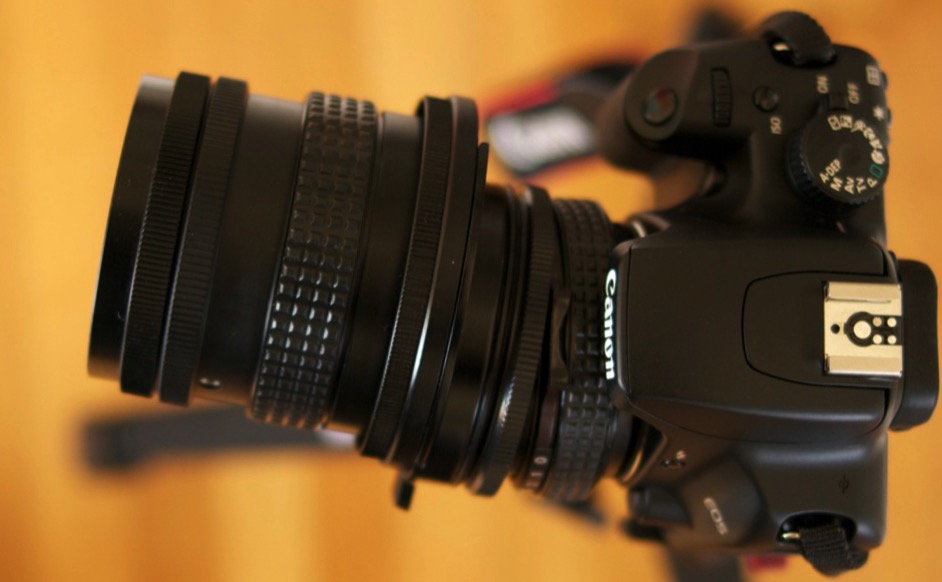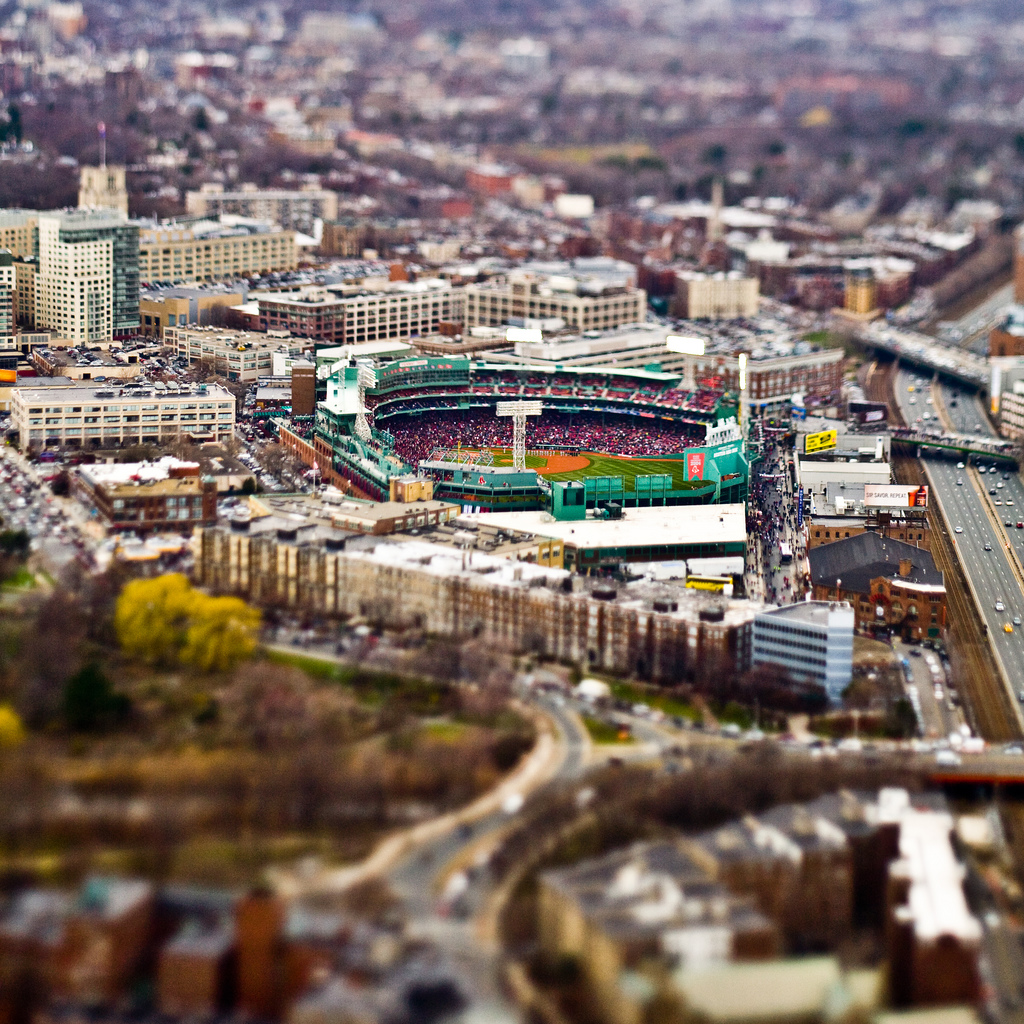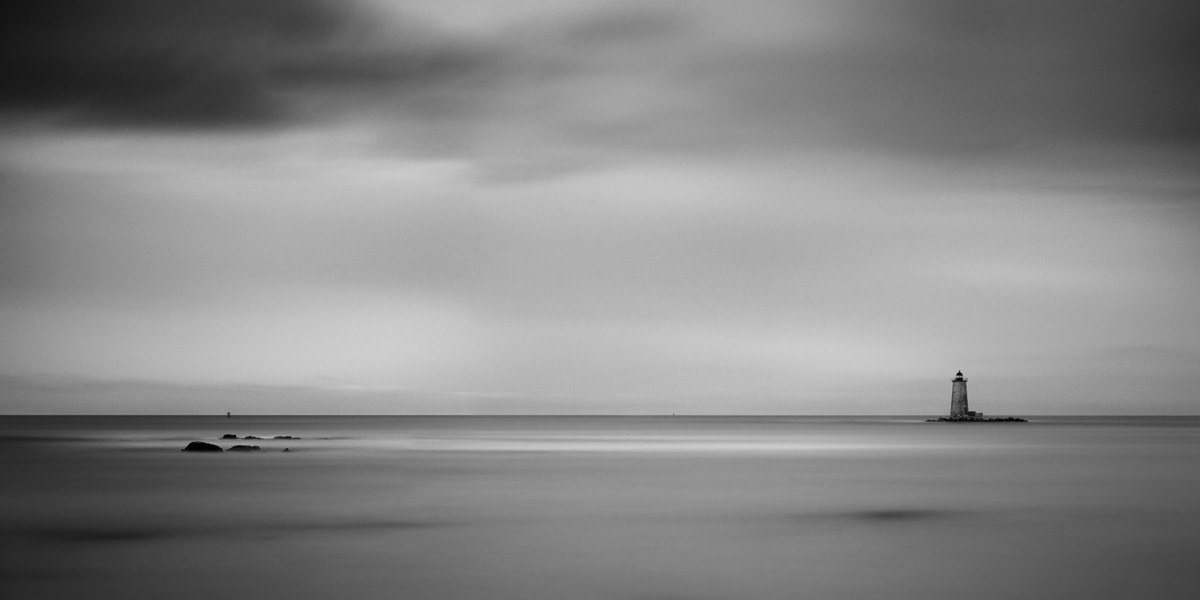Guest poster Dr. Satoru Murata is a Japanese-born renaissance man. With a B.S. in astrophysics, a B.A in anthropology and a Ph.D, in Mayan archeology, Murata travels the world with his camera. You can see more of his beautiful fine art photography work here. This post on Sony a7 tilt-shift photography originally ran on his blog, and has been edited to fit here.

I’ve been a big fan of tilt-shift lenses for a while.
Indeed, what originally got me into photography was my fascination with tilted “miniaturescapes,” found in works by those like Olivo Barbieri. In my formative months [as a photographer], I was constantly looking for tilt/shift (hereinafter referred to as TS) lenses and shooting copycat miniaturescapes whenever I got the chance.
“Opening Day” (2009)
I admit, even today, I sometimes cannot fight the urge to shoot one of these, but more and more, I’m using the shift function of TS lenses to control perspective in photographs that are comprised of architectural elements.
One of the more interesting products on the market today are tilt and/or shift “adapters.” These are lens adapters comprising a tilt and/or shift mechanism that comes between a lens and a body. Because you are adding extra flange distance, the lens needs to be one designed for a camera system with a longer flange focal distance than the camera body you are attaching the lens to. This usually involves using a lens designed for a larger format than the body. E.g., attaching a medium format lens to a full frame (or APS-C) DSLR via a tilt/shift adapter; this effectively gives you a “tilt/shift lens”.
These things are great not only because it is often a cheaper alternative to buying a tilt/shift lens, but also because it allows tilt/shift photography on systems that currently do not have tilt/shift solutions.
In this sense, and many others, the Sony A7 series cameras are fantastic; they have an extremely short flange focal distance (18 mm), which lets you adapt pretty much any camera lens that is out there. It also allows, for the first time ever, tilt/shift adapters designed to take full frame (i.e., “35mm”) lenses and adapt them onto a full frame camera.
The German manufacturer Mirex designed precisely such an adapter, a design that was quickly copied by the Chinese manufacturer Kipon.
The (big) difference is that so far, Kipon hasn’t been able to create a Canon EF to Sony (F)E mount tilt/shift adapter. This is crucial because the Canon EF mount have the shortest flange focal distance in the 35mm format so there are many adapters designed to adapt other 35mm format lenses to the EF mount. This means that if you have an EF->FE TS adapter, you will then be able to attach all sorts of lenses as long as you have an EF mount adapter for them. Without an EF->FE solution, you are pretty much required to purchase a separate TS adapter for each one of your different format lenses (e.g., one for Nikon F to Sony FE, one for Pentax K to Sony FE, one for Contax/Yashica to Sony FE, etc.).
Furthermore, the Canon EF mount has several extremely nice TS lenses (TS-E 17/4L and TS-E 24/3.5LII come to mind) which would benefit from these adapters as well.
Let me explain.
As you probably know, there are several uses for tilt/shift lenses; besides the “miniaturescape” look and the perspective control I mentioned above. Many people use the shift function to take multiple images that will be later stitched to a panorama image. Because when you take shots using shift, you are essentially taking images of different parts of a single image circle, stitching becomes extremely easy with little to no distortion along the seams.
The problem here is that, conventionally, you could only use the shift function for one or the other purpose. If you use it for controlling the perspective by vertically shifting the lens up or down, you can’t shift the lens to the left & right to create a panorama, and vice versa.
Well, if you pair a TS lens with a Mirex TS adapter, you can 🙂
Here is an image I took the other day during a long exposure workshop I held with my partner Thibault Roland.
The setup I used was:
Body: Sony A7R
Lens: Hartblei/Carl Zeiss Super Rotator 80mm F2.8 (Canon FE mount)
Adapter: HCam Master TS adapter (Canon EF -> Sony FE mount)
The vertical rise to maintain perspective on the lighthouse was realized by the Hartblei TS lens (I believe around 5 – 6 mm up); then I used the Mirex to achieve horizontal shift and took two images, which were merged to form this panorama.
“Down from the Rafters” (2015)
Of course, the shift can be set to the same direction to achieve an increased shift range for (1) a bigger panorama, or (2) further perspective correction. The degree to which you can increase the shift range depends on the size of the image circle of the lens, as well as some mechanical properties of the lens and the adapter; i.e., there are cases in which you will start to see vignetting not because you are reaching the edge of the image circle, but because the image is being obstructed mechanically by the adapter as you shift more and more.
With that is mind, for example, with the fabulous Canon TS-E 17/4L, which is configured to do up to 12 mm of shift, you can do up to an additional 8 mm of shift in the vertical direction before vignetting starts, for a combined 20 mm of shift! (On the other hand, the horizontal movement is actually inhibited by the adapter, so vignetting starts before the 12 mm marker on the lens). Tilting sees fewer restrictions, and I could tilt both mechanisms to the max for a total of 16˚ tilt without any vignetting.

6˚ tilt on the TS-E 17 and 10˚ tilt on the HCam Master TS adapter to achieve a 16˚ total tilt
While adding the complex tilt/shift mechanism behind a TS lens can add some restrictions, in those cases where you absolutely want expanded movements (especially shifting in two perpendicular directions), the adapter will come in extremely useful. Indeed, after shooting with the Hartblei TS lens & HCam Master TS adapter combo, I’m considering the adapter indispensable.
Working with Modern EF Lenses
There is one unfortunate problem with this adapter. There are no electronic components, which means it cannot control the aperture (let alone AF) of modern Canon EF lenses. This is problematic because modern EF lenses do not have aperture rings. All images will be, therefore, shot at the minimum aperture (i.e., largest F-number) of the lens, as these lenses are designed to stop down all the way when power is turned off. This is better than being wide open, resulting in shallow DOF (usually not what you’re looking for with tilt shift lenses), but still not ideal because small apertures bring about diffraction issues, especially accentuating sensor dust.
However, there is one way to work around this problem, which is explained in the video I made below:
In short:
(1) Attach EF lens to Canon body or Sony body with a Metabones (etc.) adapter that can do electronic control
(2) Set mode to “M”, shutter speed to 30s, and the aperture to your desired F-stop (e.g., f8)
(3) Hit shutter, and while the camera is exposing, unlock the lens off of the camera body (you can turn off the camera after the lens is unlocked and unscrewed a bit).
The aperture will at this point be “locked” in the F-stop you selected earlier (e.g., f8)
(4) Attach the lens to the Mirex adapter and shoot.
While this is a convoluted way of using a lens, it is the only way I know that will let you use the modern Canon TS-E lenses with the Mirex adapter on a Sony A7 series camera, and allow you to select a desired F-stop. As long as the lighting conditions don’t change drastically, it is more than feasible to shoot while maintaining the aperture at a constant F-stop. Moreover, this is currently the only way you can use these Canon TS lenses and shift in two perpendicular directions for creating perspective corrected panoramas. Hope this information will help some people, and encourage you to try out these adapters.
My daily shooter is Sony A1 with a vertical grip and various Sony lenses attached like the FE 20mm F1.8. Find more gear recommendations in our shop. As an Amazon Associate I earn from qualifying purchases.

